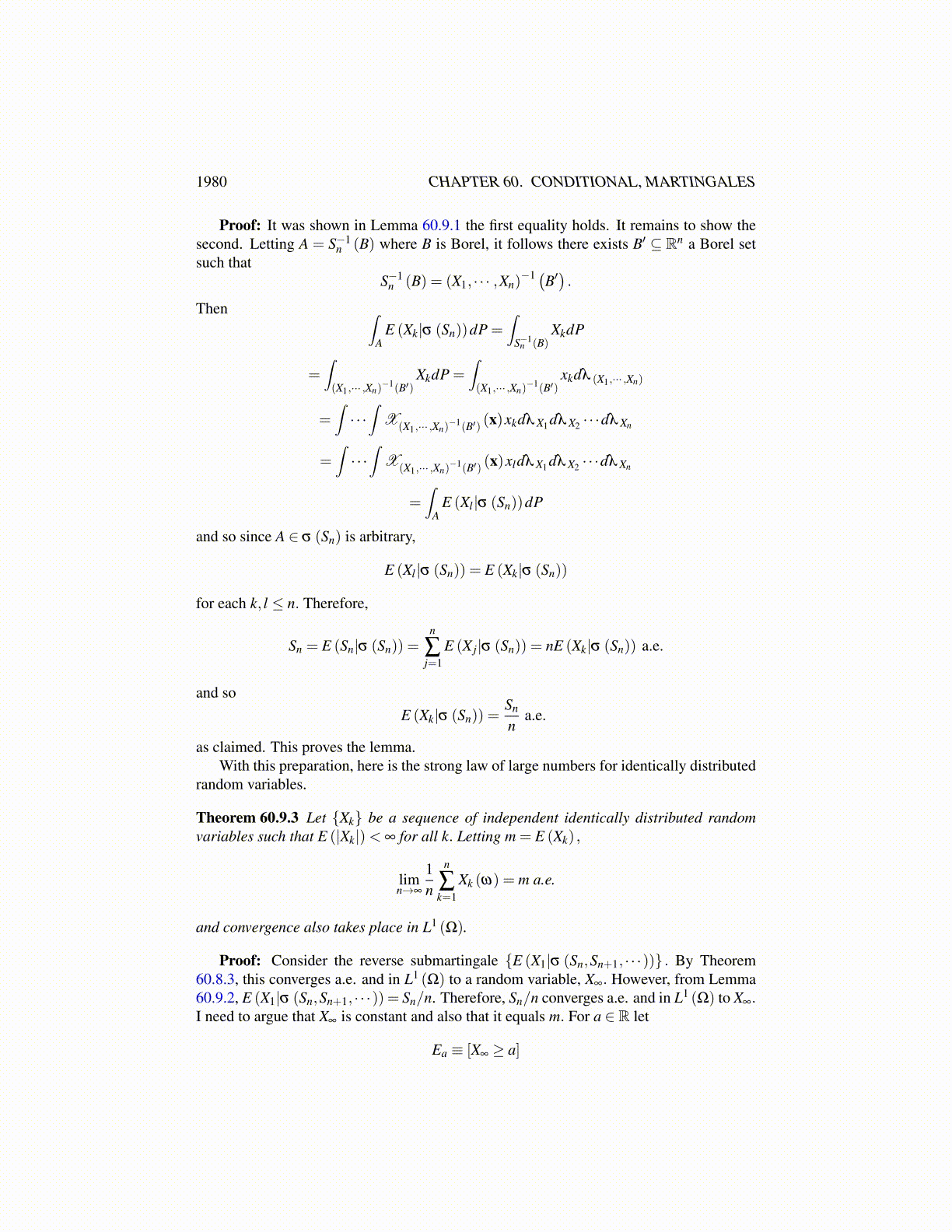
1980 CHAPTER 60. CONDITIONAL, MARTINGALES
because if inequality holds, then letting
lim infn→∞
Xn (ω)< a < b < lim supn→∞
Xn (ω)
it would follow U[a,b] (ω) = ∞, contrary to ω /∈ Nab.Let X∞ (ω)≡ limn→∞ Xn (ω) . Then by Fatou’s lemma,∫
Ω
|X∞ (ω)|dP≤ lim infn→∞
∫Ω
|Xn|dP < ∞.
and so X∞ is in L1 (Ω) . By the Vitali convergence theorem and Lemma 62.7.16 whichshows {|Xn|} is uniformly integrable, it follows
limn→∞
∫Ω
|X∞ (ω)−Xn (ω)|dP = 0.
This proves the theorem.
60.9 Strong Law Of Large NumbersThere is a version of the strong law of large numbers which does not depend on the randomvariables having finite variance. First are some preparatory lemmas. The approach followedhere is from Ash [7].
Lemma 60.9.1 Let {Xn} be a sequence of independent random variables with E (|Xk|)<∞
for all k and let Sn ≡ ∑nk=1 Xk. Then for k ≤ n,
E (Xk|σ (Sn)) = E (Xk|σ (Sn,Y)) a.e.
where Y =(Xn+1,Xn+2, · · ·) ∈ RN. Also for k ≤ n as above,
σ (Sn,Y) = σ (Sn,Sn+1, · · ·) .
Proof: Note that RN with the usual product topology has a countable basis. Here it is.Let BN denote sets of the form ∏
∞i=1 Di where for i ≤ N,Di ∈B, a countable basis for R
and for i > N,Di = R. Then BN is countable and so is D ≡ ∪∞N=1BN . From the definition
of the product topology, this is a countable basis for the product topology.Let V ∈D and U be an open set of R. Then if A ∈ (Sn,Y)−1 (U×V ) ,by independence
of the {Xn} , ∫(Sn,Y)−1(U×V )
E (Xk|σ (Sn,Y))dP≡∫(Sn,Y)−1(U×V )
XkdP
=∫
Ω
XS−1n (U) (ω)XY−1(V ) (ω)XkdP = P
(Y−1 (V )
)∫Ω
XS−1n (U) (ω)XkdP
= P(Y−1 (V )
)∫S−1
n (U)E (Xk|σ (Sn))dP.